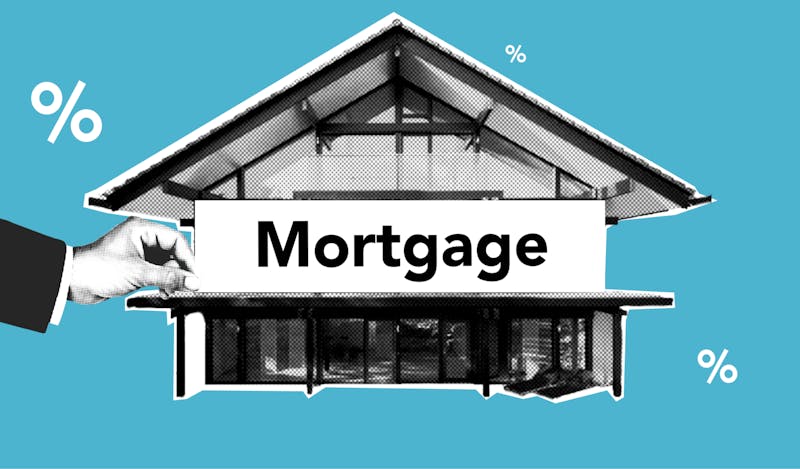Having already discussed benefits of debt consolidation, let’s move to another crucial financial strategy: bridge financing. Ever felt like you’re in a financial limbo, caught between the sale of your old home and the purchase of a new one? Bridge financing is the financial bridge that can get you from one side to the other with ease. Let’s learn more about bridge financing and how it can help you.
What is Bridge Financing and How Does it Work?
Bridge financing, commonly known as a bridge loan, is a short-term financing option used to bridge the gap between the immediate need for funds and the eventual availability of longer-term financing or resources. It’s often used in real estate transactions.
When you’ve sold your current home and are in the process of buying a new one, there might be a period where you need to pay for the new house before the funds from the sale of your old house are available. A bridge loan helps you cover the cost of the new home purchase during this interim period.
The bridge loan is secured by your existing home and is typically intended to be paid off with the proceeds from the sale of that home. This type of loan allows you to make the down payment on your new home and facilitates the transition between homes without the immediate cash from the sale of your old home.
It’s important to note that bridge loans are usually more expensive than conventional financing due to their short-term nature and the convenience they offer. They tend to have higher interest rates and may involve additional fees. Additionally, obtaining a bridge loan depends on the borrower’s creditworthiness and the equity in their current property.
Bridge Loan Interest Rates in Canada
Bridge loan interest rates in Canada can vary based on several factors, including the lender, the loan amount, the borrower’s credit score, and whether there is a sale agreement for the borrower’s old home.
As of late 2023, typical bridge financing rates were between 10.00% and 12.00%. These rates are generally higher than those for traditional mortgage loans because bridge loans are short-term and considered riskier by lenders. On average, bridge loan interest rates are around the prime rate plus 1%. Interest rates for bridge loans often hover around the Bank of Canada prime rate plus 2%, which would currently place them just over 9.2%.
Homeowners considering a bridge loan for a down payment should carefully review the interest rates offered by different bridge loan lenders and account for any additional fees, such as application and registration fees, to understand the full cost of the loan.
How Can I Qualify for a Bridge Loan?
Qualifying for a bridge loan in Canada typically involves the following criteria:
- Strong Credit Score: A good credit history is essential for approval.
- Equity: Significant equity in your current property is required, as the loan amount is often a percentage of this value, usually between 60-80%.
- Proof of Income: Lenders will require evidence of income to ensure that you can make the loan payments.
- Sale Timeline: A clear timeline for the sale of your current property is necessary.
- Lender Restrictions: Not all lenders offer bridge financing, and those that do may have specific restrictions.
- Property Type: While you can use a bridge loan for various property types, including rental properties, terms may differ if the property is not your primary residence.
The loan approval process can vary in duration, potentially taking anywhere from a few days to a few weeks. The bridge loan terms usually span from 6 to 12 months, though some lenders may extend up to 24 months. It’s also important to be aware of the higher interest rates and additional fees, like origination or closing costs, associated with bridge loans compared to traditional mortgages.
When Should I Consider Using a Bridge Loan?
You should consider using a bridge loan in the following situations:
- Home Purchase Overlap: If you’ve purchased a new home and your current home’s sale hasn’t closed yet.
- Seller’s Market: When you find your dream home in a competitive market and must act quickly.
- Closing Date Gap: There’s a short-term gap between the closing date of your new home and the sale of your old one.
- Cash Flow Management: To manage cash flow when you need immediate funds for a down payment.
- Avoiding Temporary Housing: To move directly into your new home without the need for temporary housing.
- Renovation and Sale: If you plan to renovate your new home before moving in, but need the funds from your current home’s sale to do so.
What are the Advantages of Bridge Loans Over Traditional Loans?
The advantages of bridge loans over traditional loans include:
- Timing Flexibility: They provide immediate cash flow, allowing for the purchase of a new property before the sale of an existing one.
- Convenience: Bridge loans can prevent the need for temporary housing and allow for a seamless move from one home to another.
- Strategic Financial Tool: They can be a strategic tool in a seller’s market, giving buyers the ability to make quick decisions and offers without sale contingencies.
- Short-Term Solution: Designed for short-term use, they typically do not have prepayment penalties if paid off early when the original property sells.
Finding the Right Lender and Determining Loan Amounts
When seeking out types of bridge financing, it’s critical to understand that not all lenders are created equal. You must find a lender that not only offers bridge loans but also one that aligns with your specific financial scenario. Whether you’re an individual transitioning between homes or a business in need of urgent capital, the lender should accommodate your needs with appropriate terms.
Understanding bridge loans means recognizing their diversity. Some lenders specialize in residential bridge loans, while others may cater to commercial clients, offering a bridge loan for business. Each comes with its own set of rules and qualification criteria.
For individuals, a bridge loan could be a percentage of your home’s value. In contrast, a bridge loan for a business might be based on the business’s cash flow or assets. Lenders will assess the risk and decide on the loan amount, typically ranging from 50-80% of the property’s value.
Short-term bridge loans are exactly that—short-term. They’re not a one-size-fits-all solution and should be chosen with a clear exit strategy in mind, as they generally carry higher interest rates and fees due to the urgency and flexibility they provide. The key is to find a lender that offers the most favourable terms for your short-term financial gap, with a clear understanding of the costs involved.
FAQs
How long does it take to get a bridge loan?
- It can take anywhere from a few days to a few weeks to get approved for a bridge loan, depending on the lender and the borrower’s qualifications.
Are there risks involved with bridge financing?
- Yes, risks include higher interest rates compared to traditional loans, the potential difficulty in selling the current home quickly, and the financial strain if the bridge loan’s term expires before the home is sold.
What are the differences between bridge loans and mortgages?
- Bridge loans are short-term, typically have higher interest rates, and are meant to be repaid quickly, often through the sale of a property. Mortgages are long-term with lower interest rates, spread over many years.
Can I use a bridge loan to purchase a new home before selling my current one?
- Yes, bridge loans are specifically designed for this purpose, allowing you to finance the purchase of a new home while awaiting the sale of your current one.
How do lenders determine the amount of bridge financing I can receive?
- Lenders look at the equity in your current home, your credit score, income, and the value of the new property to determine the loan amount, which is typically a percentage of your current home’s value.



